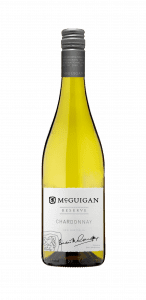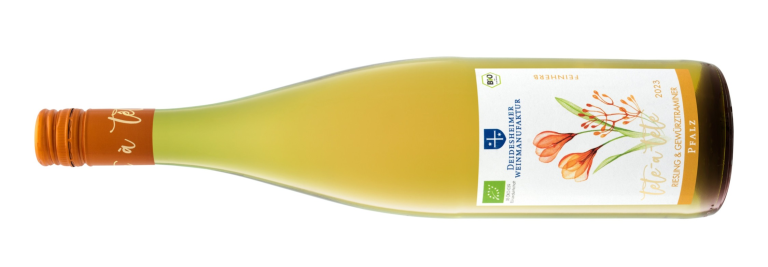In truth, not every major wine brand seems able to combine high volumes of sales with high levels of quality.
In my opinion, though, one outfit that does achieve those (far from easy) twin attainments, is Australia’s McGuigan.
Success like that does not happen overnight though.
It was almost 150 years ago that a Hunter Valley dairy farmer called Owen McGuigan created a vineyard – and ran it as a side-line.
More importantly, though, he gave his son Perc a love of this “side-line” – so much so that Perc subsequently became a major player in that part of Australia’s wine trade
The next generation (sons Brian and Neil along with Brian’s wife, Fay) built on that success and took it to the next stage.
That led to the creation of McGuigan Wines in its current form which, in 1999, set up shop in the Barossa Valley too.
There followed a string of international awards that help explain the high regard in which the McGuigan name is held right up to the present day.
So, when I was after a candidate for a vertical look at a white wine hierarchy (to match what I did with Concha Y Toro pinot noir earlier in the year), McGuigan’s chardonnay was a stand-out option.
Today then, I look at three different wines they produce but, as these wines are widely available, they are shown with just a price guide rather than specific details.
But why Chardonnay
Actually, chardonnay is a good yardstick by which to judge Australia’s larger producers.
First of all there’s a lot of it – around 300-400 000 tonnes most years and it accounts for almost half of the country’s entire white grape crush.
Secondly, those selling chardonnay have needed to be adaptable – nimbly adjusting to substantial changes in consumer tastes and, thus, the market.
Traditional ripe, toasty, rich, full bodied, oaky, fruit-salad versions fell out of favour as consumers switched their enthusiasm to fresher, zingier white wines – like sauvignon blanc in particular.
Chardonnay producers’ initial response ushered in a host of austere, unoaked versions but, latterly, the pendulum has swung part of the way back.
Nowadays, balance is the key.
Oak now has a more constrained, secondary, role with fruit (or even mineral) components allowed to call the shots – but with a crisper, more vibrant voice.
Obviously, any big organisation needed to react to changes of that magnitude; anything less would have been commercial suicide.
So – what did happen next?
Meet then our first wine – an inexpensive, entry point chardonnay that appears under a South Eastern Australia label and typifies the new, carefully balanced style.

Like all-embracing “appellations” used in other countries, South Eastern Australia is an amalgam of numerous more specific geographic regions which, in fact, includes all the country’s main wine areas except Western Australia.
It allows grapes from different areas, and even states, to be blended to help standardise styles and counteract vintage variations.
The result in this example is a well-made, wine that neatly illustrates the lighter end of the “balanced chardonnay” style and delivers pronounced fruit components, a sparing use of oak and only limited texture.
Lively yet soft, 2019 McGuigan Black Label Chardonnay (from £5.50 upwards and 12.5% abv) has apple and ripe pear flavours, good lime acidity, a very clean mouth feel and a subtle background of vanilla.
Now we get more specific
When Australian chardonnay started to come to the fore about 50 years ago, it was the Hunter Valley in New South Wales (our next port of call) that seemed to lead the charge.

Its climate was perfect for producing the rich, ripe and forceful chardonnay that was very much in vogue at the time.
As tastes changed though, other parts of the State kept New South Wales’s reputation high with, for instance, “modern” versions from areas like Orange and Tumbarumba.
The NSW example we are about to consider has something from both “schools” containing more depth, opulence and tropical fruit elements than Black Label but without the high octane dominance of yesteryear.
Textured and smooth, 2019 McGuigan Reserve Chardonnay (usually listed around £7 and 12.5%) brings us bright, orange, peach, mango and pear flavours with zippy acidity and (presumably oak-derived) crème brulee touches behind them.
Finally to South Australia
The switch from last century’s traditional chardonnays meant that cooler regions assumed greater importance.

Lower temperatures mean less ripeness (and, hence, more acidity and lower alcohol levels) which enable the very versatile chardonnay grape to produce more nuanced and elegant styles of wine.
Happily, South Australia had one such area that fitted the new demands well.
Despite being an important wine region 150 years ago, Adelaide Hills had been eclipsed in recent years by the region’s hotter valley floor areas.
Now the elevation, misty hillsides and relatively high rainfall made the area around the Mount Lofty ranges an attractive proposition.
These days, cool climate varieties like pinot noir and, especially, sauvignon blanc prosper there as well, of course, as chardonnay.
Certainly, cool climate piquancy and lively acidity are readily apparent in our final McGuigan wine but this complements those characteristics with traditional chardonnay components – yet it is still young enough to benefit from decanting.
Alongside its firm acidity and lime peel zippiness, 2018 McGuigan The Shortlist Chardonnay (£12 – £15 and 13%) delivers rich and smooth cooked apple with ripe melon flavours ably supported by a long, vanilla, toffee, toast and pie crust finish.
So, in summary, if you want a light, soft, everyday chardonnay then Black Label is for you.
If your preferences include richness and skilfully judged oak but lively acidity then head for The Shortlist with the Reserve sitting between the two – leaning towards Shortlist for texture and Black Label for price.
Join us again on Monday everyone when we examine the latest supermarket promotions and discover what pleasures the current Top Tips have in store for us.








